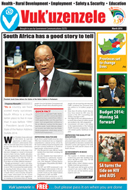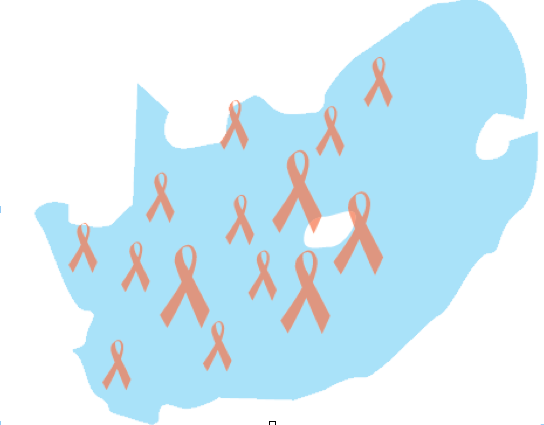Mar 2014
Mar 2014 sadminSouth Africa has a good story to tell
South Africa has a good story to tell sadmin
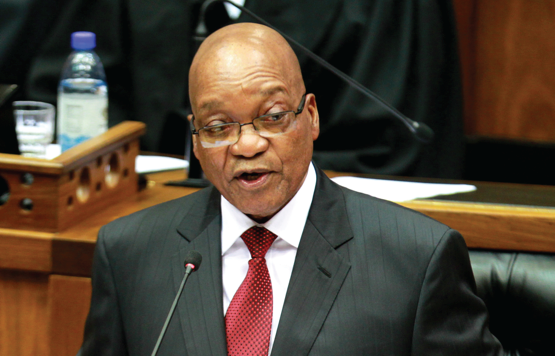 “As a country we have scored many successes. South Africa is a much better place to live in now than it was before 1994.” – President Jacob Zuma, State of the Nation Address (SoNA) 2014.
“As a country we have scored many successes. South Africa is a much better place to live in now than it was before 1994.” – President Jacob Zuma, State of the Nation Address (SoNA) 2014.
When President Zuma delivered his 2014 SoNA, he used the opportunity to reflect on government’s achievements since 2009. He also took stock of how far the country has come since the dawn of democracy in 1994.
He told a positive story of the many lives that have changed as a result of increased access to basic services, health, education and work opportunities. However, President Zuma also made it clear that the work of government continues as many others wait to be taken out of their different situations.
Though government’s work is not done, South Africa is a much better place than what it was in 1994. Government has made strides in ensuring South Africans enjoy a decent life. The National Development Plan, which is South Africa’s socio-economic blueprint and a major achievement for the current administration, provides some suggestions on creating an environment that can change people’s lives for the better. Government and the people of South Africa should be proud.
Quick fact
Government’s Expanded Public Works Programme and the Community Work Programme have created three million work opportunities over the past five years. Such programmes continue to be an effective cushion for the poor and the youth. South Africans obtain an income and skills from the Public Works programme, which they use to find formal employment.
Improving healthcare
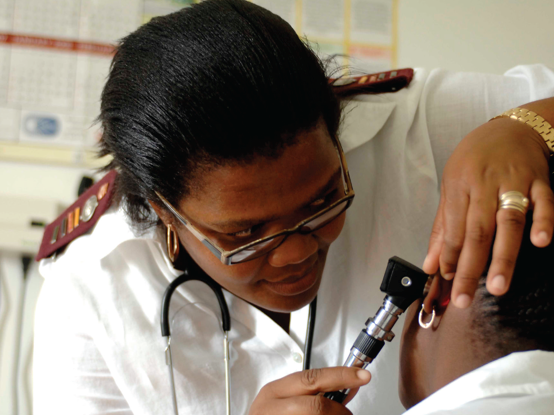 South Africa’s public health sector has, since 1994, been transformed into an integrated, comprehensive national service, driven by the need to address historical inequities and provide essential healthcare to disadvantaged people. Achievements include:• Over the past five years, 300 new health facilities have been built, including 160 new clinics.
South Africa’s public health sector has, since 1994, been transformed into an integrated, comprehensive national service, driven by the need to address historical inequities and provide essential healthcare to disadvantaged people. Achievements include:• Over the past five years, 300 new health facilities have been built, including 160 new clinics.
- Ten new hospitals have been built or refurbished in Ladybrand, Germiston, Mamelodi, Natalspruit, eThekwini, Zola, Bojanala, Vryburg District, Swartruggens, Khayelitsha and Mitchell’s Plain.
- The HIV and AIDS turnaround is one of the biggest achievements of this ad- ministration and South Africa is used as a model country by the United Nations Programme on HIV and AIDS.
- Mother-to-child transmission of HIV has declined sharply and the number of people who are receiving anti-retroviral (ARV) treatment has increased from one million to 2.4 million people in 2013.
- More than 20 million South Africans have been tested for HIV since the launch of the HIV Counselling and Testing campaign in 2011.
- The target for the next administration is to ensure that at least 4.6 million people are enrolled in the ARV programme.
- Government will enter a new phase in the implementation of the National Health Insurance programme, which will extend quality healthcare to the poor.
 Health
Health
Patients receiving ARVs increased from 47 500 in 2004 to more than 1.7 million in 2011, while the number of people dying annually from AIDS decreased from 300 000 in 2010 to 270 000 in 2011.
Improving the quality of education
Over the past 20 years, government has implemented major policy reforms to address past inequalities in education, transform the education system and respond to the need to increase the skills and life chances of all South Africans.
Achievements in basic education
- The number of children attending Grade R has more than doubled from about 300 000 to more than 700 000 between 2003 and 2011.
- Eight million school children receive healthy food from government.
- The matric pass rate has gone up from around 61 per cent in 2009 to 78 per cent last year and the bachelor passes improve each year.
- The South African Sign Language curriculum will be offered in schools from 2015 to promote inclusivity and diversity.
- The number of literate adults through the Kha Ri Gude programme has increased from 2.2 million in 2008 to three million people.
- Government has also been investing in teacher training and is re-opening teacher training colleges to meet the demand.
- 370 new schools have been delivered, re- placing mud schools and other unsuitable structures around the country to produce a decent learning environment.
Achievements in higher education and training
- Student enrolment at universities in- creased by 12 per cent while Further Education and Training college enrolments have increased by 90 per cent.
- Government has increased the budget of the National Student Financial Aid Scheme to R9 billion to meet the rising demand.
- Two brand new universities, Sol Plaatje in the Northern Cape and the University of Mpumalanga have been established. Government will also build 12 new FET colleges in Limpopo, Mpumalanga, KwaZulu-Natal and Eastern Cape.
- The launch of the National Education Collaboration Framework last year was an important development for the country.
Rural development and land reform
- For the past 20 years government com- mitted itself to ensuring that the country develops sustainable rural communities through a major focus on agrarian reform, improving rural household food security and rural services, and creating employment in rural areas.
- The agricultural support programme,
- The first 88 smallholder farmers in this programme supplied the United Nations World Food Programme with 268 tons of maize and beans to send to Lesotho in January 2014.
- Government will continue to promote the fisheries sector as well, which contributes an estimated R6 billion to the economy and provides 27 000 jobs.
Growing the economy
• On average, the economy has grown at 3.2 per cent a year from 1994 to 2012, de- spite the global recession, which claimed a million jobs. National wealth, measured in terms of GDP, has grown to more than R3.5 trillion.
• During the course of 2013, the rand depreciated by 17.6 per cent against the US dollar. This poses a significant risk to inflation and will also make the infrastructure programme more expensive. However, export companies, particularly in the manufacturing sector, should take advantage of the weaker rand and the stronger global recovery.
• Government, business and labour should work together to grow the economy at rates above 5 per cent to create the jobs needed. Fortunately this collaboration is already taking place at NEDLAC.
• It will soon take just under 300 days to start a mine in South Africa. This is part of government’s efforts to make it easier to do business in the country.
Creating decent jobs
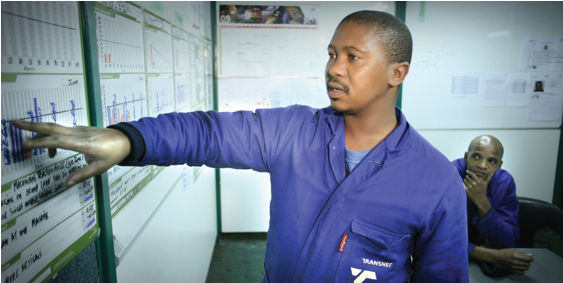 There are currently 15 million people with jobs in the country, the highest ever in history and according to Statistics South Africa, over 650 000 jobs were created in 2013.
There are currently 15 million people with jobs in the country, the highest ever in history and according to Statistics South Africa, over 650 000 jobs were created in 2013.
However, youth unemployment in South Africa remains a major concern. To address this, a number of measures are being taken, including the following:
- The Employment Tax Incentive Act, 2013 (Act 26 of 2013), which encourages employers to hire younger workers.
- Regulations will be passed to ensure that this does not adversely affect unsubsidised or older workers.
- Further measures are contained in the National Youth Accord signed in Soweto in April 2012.
- Cabinet has set a target of six million work opportunities from 2014 to 2019, targeting the youth.
Building South Africa
Government adopted the National Infrastructure Plan in 2012 that intends to transform the country’s economy, create jobs and strengthen the delivery of basic services. The plan also supports the integration of African economies. Since the adoption of the plan, government has invested R1 trillion in public infrastructure. Many of the projects are completed or are nearing completion.
Justice and constitutional development
- The Chief Justice has been established as a separate institution from the Department of Justice and Constitutional Development to further enhance its independence.
- Progress is being made in the transformation of the judiciary to reflect the race and gender demographics of the country.
- Black judges (African, Indian and Coloured) now make up 61 per cent of all judges. However, there is an under- representation of women on the bench, which remains of concern. Of the judicial establishment of 239 judges, only 76 are women.
- The challenge is to transform the legal profession broadly in order to nourish the pool from which female judges can be appointed. The finalization of the Legal Practice Bill will assist to broaden the pool from which potential judicial officers can be selected.
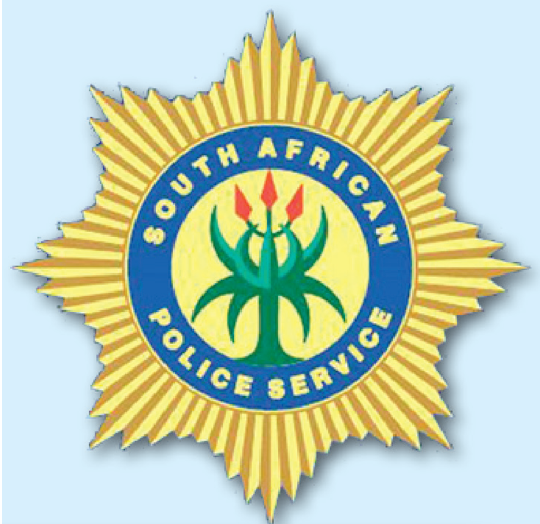 Fighting crime and corruption
Fighting crime and corruption
- The overall crime rate has decreased by 21 per cent since 2002 and work is on-going to make communities safer.
- One of the key focus areas is to eradicate violence against women and children. To respond to this challenge, measures that have been introduced include the re-opening of the Family Violence, Child Protection and Sexual Offences units as well as the Sexual Offences Courts.
- Law enforcement agencies are working hard tackle rhino poaching. Government has reached agreements with China, Vietnam, Kenya, Mozambique and other Southern African Development Community (SADC) countries to work together to stop this crime.
- Fighting corruption within the Public Service is producing results. Since the launch of the National Anti-Corruption Hotline by the Public Service Commission, over 13 000 cases of corruption and maladministration have been referred to government departments for further handling and investigation.
- Government has recovered more than R320 million from perpetrators through the National Anti-Corruption Hotline.
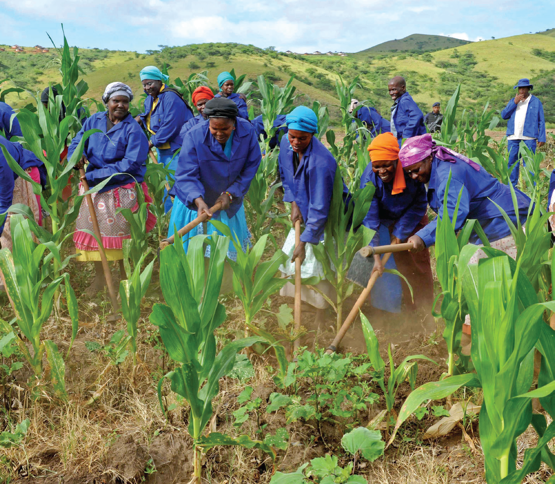 Progress with land reform
Progress with land reform
- Since 1994, nearly 5 000 farms, comprising 4,2 million hectares, have been transferred to black people, benefiting over 200 000 families.
- 80 000 land claims totalling 3.4 million hectare have been settled and 1.8 million people have benefited.
Hotline
-
The hotline’s other successes include:
- 1 542 officials were dismissed from the Public Service.
- 140 officials were fined three months’ salary.
- 20 officials were demoted.
- 355 officials were given final written warnings.
- 204 officials were prosecuted.
- To prevent corruption in the supply chain system, government has decided to establish a Central Tender Board to adjudicate tenders in all spheres of government. This body will work with the chief procurement officer whose main function will be to check on pricing and adherence to procedures as well as fairness.
- The Special Investigating Unit is investigating maladministration or alleged corruption in a number of government departments and state entities, through 40 proclamations signed by the President during this administration. The public will be informed of the outcome of the investigations.
- In the first six months of last year, the Asset Forfeiture Unit paid a total of R149 million into the Criminal Assets Recovery Account and to victims of crime. This is 170 per cent above its target of R55 million and is higher than it has ever achieved in a full year.
- Last year, the competition authorities investigated large-scale price fixing in the construction industry and fined guilty companies R1.4 billion.
Did you know
Government will conclude the procurement of 9 600 megawatts of nuclear energy. Biofuels manufacturers have been selected and have started work
Access to basic services
South Africa has made significant strides in rolling out basic service delivery and improving the lives of many.
Over the past 20 years, there has been a remarkable increase in access to services such as water, sanitation and electricity. Government has started an intensive programme
to eliminate the bucket system as part of restoring the dignity of South Africans. Phase one of the programme will eradicate buckets in formalised townships of the Free State, Eastern Cape and Northern Cape. Phase two will eradicate buckets in informal settlements in all provinces.
Building decent homes
About three million housing units and more than 855 000 serviced sites were delivered since 1994. Nearly 500 informal settlements have been replaced with quality housing and basic services over the past five years.
Creating a better world
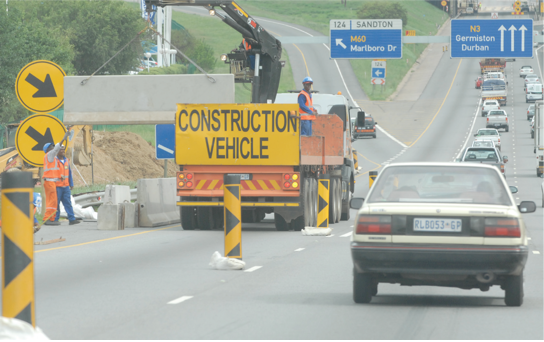 South Africa has worked hard to strengthen support for the African Union, SADC and all continental bodies whose purpose is to achieve peace and security.
South Africa has worked hard to strengthen support for the African Union, SADC and all continental bodies whose purpose is to achieve peace and security.
South Africa has also prioritised the promotion of regional economic integration, infra- structure development, intra-African trade and sustainable development in the continent. This year the country also submitted its third country report to the AU African Peer Review Mechanism, which was well received.
South Africa also continues to support peace-making and conflict resolution, and progress is being made in negotiations between Sudan and South Sudan.
Following requests from Sri Lanka and South Sudan for assistance in bringing about peace and reconciliation, Cyril Ramaphosa has been appointed as South Africa’s Special Envoy to the two countries.
South Africa will continue to strengthen relations with Europe, North America, Latin America, Asia and countries in the South.
Participation in international multilateral forums such as the G20 has been beneficial for the country. Joining the Brazil, Russia, India and China (BRIC) group in December 2010 counts as among the key achievements of the fourth administration.
South Africa will also continue to serve diligently in the United Nations to promote strong international governance and will continue promoting the reform of the UN Security Council and global financial institutions.
Fast facts about South African transport
- Close to 1 500km new roads or lanes have been built.
- R120 billion – the Passenger Rail Agency of South Africa’s spending on new trains in the next 10 years.
- R300 billion – Transnet’s budget for transport infrastructure.
- The Gautrain project is now fully functional and carries over 1.2 million passengers a month.
- 700km – the pipeline from Durban to Gauteng moving four billion cubic litres of fuels a year.
Renewable energy
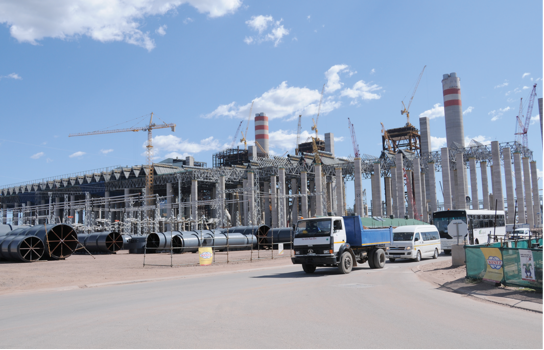 Construction is continuing at the new power stations, Medupi in Limpopo, Kusile in Mpumalanga and Ingula near Ladysmith, employing more than 30 000 workers.
Construction is continuing at the new power stations, Medupi in Limpopo, Kusile in Mpumalanga and Ingula near Ladysmith, employing more than 30 000 workers.
Government continues to explore other sources of energy, in line with the Integrated Resource Plan for Energy.
The development of petroleum, especially shale gas will be a game-changer for the Karoo region and the South African economy. Having evaluated the risks and opportunities, the final regulations will be released soon and will be followed by the processing and granting of licences.
Did you know
To improve the water supply, two large new dams were completed, De Hoop in Limpopo and Spring Grove in KwaZulu-Natal, while phase two of the Lesotho Highlands Water Project is to be launched soon.
Provinces set to change lives
Provinces set to change lives sadminProvincial focus
Northern Cape
 High on the agenda of Premier Sylvia Lucas’ recent State of the Province Address was issues of renewable energy, transport, education and rural development.
High on the agenda of Premier Sylvia Lucas’ recent State of the Province Address was issues of renewable energy, transport, education and rural development.
Renewable energy
The province is set to become South Africa’s renewable energy hub through the construction of large solar and wind power stations. This will unlock existing potential and position the province to at- tract both local and foreign investment.
Key investments include the Square Kilometre Array (SKA), Gamagara Mining Corridor and the renewable energy sector.
Agriculture, rural development
- Over R80.5 million has been allocated for agriculture and rural development, which will benefit 4 500 smallholder and black commercial farmers.
- The Ilima Letsema campaign has been allocated R70 million, with a special emphasis on assisting farmers to in- crease production by providing them with inputs, as well as the revitalisation of the Vaalharts irrigation scheme.
- The Fetsa Tlala programme, which is aimed at promoting food security, has resulted in the establishment of eight community and 138 household gardens.
Astronomy
- The province is home to a scientific facility, the Southern Africa Large Telescope (SALT), one of the top 10 in the world.
- SALT allows astronomers to examine the scale and age of the universe, the life and death of stars and the earliest galaxies.
- Also, 80 per cent of the SKA radio telescope, consisting of 3 000 dishes with a collection area of one square kilometre, will be located in the province.
Transport infrastructure
- The De Aar Logistics Hub will be developed into a major materials supply depot to serve as a supply and storage facility for Transnet for the rails and sleepers required during the upgrading of the railway line from Kimberley through De Aar to Ngqura.• In partnership with Transnet and the Emthanjeni Municipality, the youth precinct initiative and the Wagon Maintenance Depot will be launched in De Aar this year.
Education
- One the key achievements in the education sector in the province is the establishment of the Sol Plaatje University, which opened its doors this year.
- There are also plans to build six new public schools in the 2014/15 financial year and to build a mega school with a mega hostel in Joe Morolong, at an estimated cost of R100 million
North West
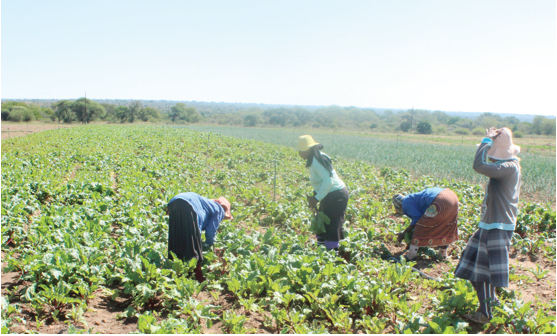 North West Premier Thandi Modise said the provision of services to improve the lives of the people was at the top of the provincial government’s agenda.
North West Premier Thandi Modise said the provision of services to improve the lives of the people was at the top of the provincial government’s agenda.
An amount of R150 million had been set aside through the Premier’s Legacy Projects to reduce the backlog in sanitation by the end of March 2014.
A significant dent in the sanitation backlog has been made, with 12 314 sanitation facilities put up in the four district municipalities.
She said 2 500 rainwater tanks would be distributed to areas with less than average rainfall and 56 boreholes are being drilled and are expected to be ready by the end of the 2013/14 financial year.
Youth development
The Bursary Programme awarded grants amounting to R49.5 million to 1 035 needy young people to pursue their studies over the past five years. 213 of the young people who benefited from the programme graduated in various scarce skills needed by the province.
A total of 4 868 unemployed youth and graduates benefited from the provincial skills development and training programmes.
About 3 833 of the beneficiaries were registered in skills development programmes such as learnerships, internships and apprenticeships.
The Mining Qualification Authority offered 60 students the opportunity to further their studies in mining engineering this year.
Projects in the pipeline
A partnership between the North West government, Department of Water Af- fairs and the Ngaka Modiri Molema District Municipality to construct the Dinokana Water Supply Phase 2 at Ramotshere Moiloa Local Municipality at a cost of about R21.4 million. The project is expected to be completed by the end of November 2014.
Over R21.8 million has been made available to ensure that all the villages get sufficient clean water through the Mafikeng South Regional Water Supply Scheme.
The Setlagole Bulk Water Supply started in November 2013, will be completed in October 2014 at tune of R22 million.
A memorandum of understanding with the Department of Water Affairs and Human Settlements to the value of R2 billion was signed in January this year to accelerate the provision of clean water and sanitation.
Eastern Cape
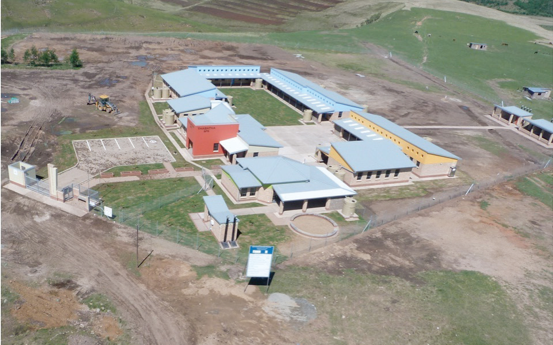 The Eastern Cape has made major achievements in education since democracy.
The Eastern Cape has made major achievements in education since democracy.
Premier Noxolo Kievit outlined some of these successes in her State of the Province Address.
These include:
- 1 516 new schools built in the Eastern Cape in the past 20 years, 202 of which were constructed during the current political term.
- 1 467 of these schools were funded from the provincial infrastructure budget.
- Of the 5 552 schools in the province, 5 132 schools and 1.6 million learners are now benefitting from the school nutrition programme.
- 338 schools started implementing government’s indigenous language policy.
- 5 336 schools, with 1 580 738 learners, have been declared no-fee schools.
- The number of funded Early Childhood Development Centres increased from 893 in 2009 to 1 324 in 2013, resulting in 5 456 job opportunities.
In the pipeline are plans to build a further 160 schools.
Job creation
- The East London Industrial Development Zone (IDZ) secured 32 investments with a value of R4.2 billion since its inception.
- The Coega IDZ secured 21 operational investors to date, with a total investment value of R2.1 billion, yielding 4 409 operational jobs.
- The province secured 12 wind farms in the National Renewable Energy Independent Power Producer Programme valued at R21 billion. Of this amount, R7 billion has been earmarked for local content.
- Afrox announced an investment of more than R300 million in an air separation unit in Coega to supply industrial gas.
- Through the Expanded Public Works Programme (EPWP), 707 286 job opportunities were created, far exceeding the target of 489 920.
- 1 503 young people were employed through the National Youth Service Corps.
- Through the SMME incubation programme, which is aimed at enterprise development, the Eastern Cape government supported the development of 2 012 new SMMEs.
- Through the Jobs Stimulus Fund, R24.6 million was disbursed to 27 companies, creating 2 460 jobs.
Gauteng
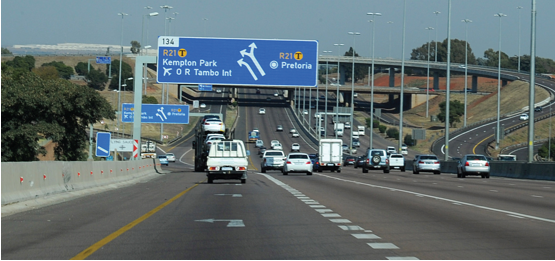 In her State of the Province Address, Gauteng Premier Nomvula Mokonyane, said the province had made great strides in the health and education sectors.
In her State of the Province Address, Gauteng Premier Nomvula Mokonyane, said the province had made great strides in the health and education sectors.
Health
In partnership with civil society, the province has turned the tide against HIV and AIDS with related deaths dropping dramatically since 2010.
New HIV infections among adults have dropped from 104 000 to 60 000 between 2004 and 2012.
Over the same period, new infections among young people and children dropped by 40 per cent in 2004 and 86 per cent in 2012.
Over 900 000 people are now on anti-retroviral therapy (ART) in the province compared to just over 75 000 in 2006.
Education
The Premier noted there were 1.7 million learners in 2 070 schools across the province.
About 1.2 million learners receive a meal while more than 470 000 learners received free uniforms.
The province reduced the number of schools performing below 60 per cent in matric from 234 in 2009 to 43 schools in 2013.
Matric results have improved over the years with an 81.4 per cent pass rate and a total of about 36 000 learners achieving distinctions and Bachelor passes.
Transport
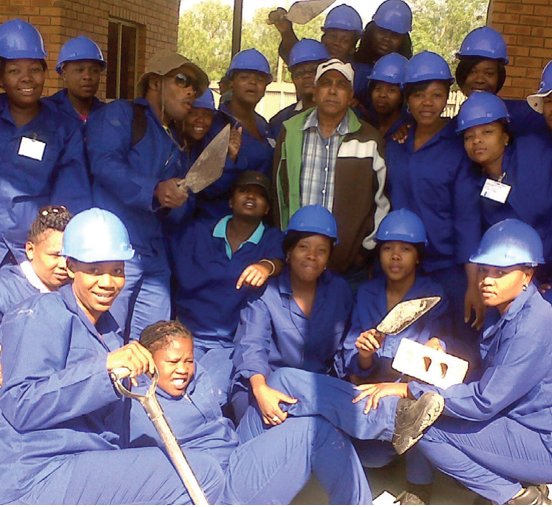 Gauteng motorists will soon enjoy upgraded and wider un-tolled roads.
Gauteng motorists will soon enjoy upgraded and wider un-tolled roads.
With a budget of R10 billion, the N12 and the N14 will be widened to allow motorist to use them as an alternative to the tolled M1 and N1 roads.
South African National Roads Agency Limited (Sanral) will upgrade the N12 between Springs and Carletonville, and broaden the N14 from Krugersdorp to Diepsloot.
Other road upgrades include Beyers Naudé and Malibongwe Drives and portions of the Old Vereeniging Road.
There are also plans to roll out the Bus Rapid Transit (BRT) system to the West Rand.
Mpumalanga
Life has changed for the better in Mpumalanga since 2009, says Premier David Mabuza.
Millions of Mpumalanga residents have access to basic services like water, sanitation, electricity, healthcare and housing.
Recent municipal annual reports indicate that Mpumalanga has increased water provision from 77.1 per cent to 94.9 per cent (1 021 076) of households, access to sanitation services from 53.9 per cent to 95.6 per cent (1 028 606) of households and access to electricity from 81.7 per cent to 89.8 per cent of households.
The Premier said access to refuse removal services went up from 41.5 per cent to 54 per cent (544 069) of households.
Major highlights on water infrastructure in- vestments over the past five years include the Victor Khanye - Delmas Bulk Water Treatment Works (worth R96 million) and the Bloemendal to Delmas Bulk water pipeline (worth R171 million).
Job creation
- The province managed to increase job creation by 9.2 per cent in the past five years.
- Job opportunities increased from 1 052 000 to 1 149 000, bringing the total number of jobs created since quarter one of 2009 to 97 000.
- Employment opportunities were mainly driven by the community services sector, which created approximately 52 000 jobs.
- Through the Expanded Public Works Programme, the province created 270 807 work opportunities between 2009 and 2013.
Water, infrastructure projects
- The province is committed to attending to the persistent problem of bulk water and sanitation infrastructure by assigning the Mpumalanga Economic Growth Agency (MEGA) to eight selected municipalities.
- Focus will also be on completing the Hoxane water treatment plant worth R78 million.
- The province is in the process of upgrading and maintaining water infrastructure at Emalahleni, Nkomazi, Mbombela, Dr. JS Moroka, Thembisile Hani, Bushbuckridge and Mkhondo local municipalities at an estimated value of R171 million.
Western Cape
Western Cape Premier Helen Zille says the green economy will create thousands of jobs as foreign investors line up to set up shop or expand their operations in the province.
In her State of the Province Address, Premier Zille identified the green economy as an alternative job driver in the province and said the interest from foreign investors was likely to create jobs and contribute to alleviating poverty.
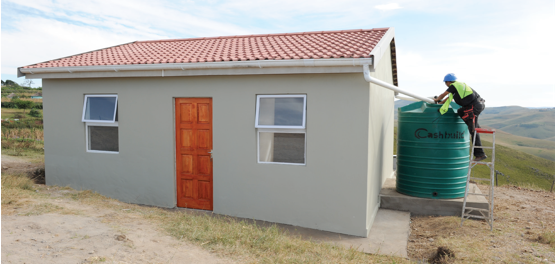 The green economy formed part of an overall R2 billion worth of foreign direct investment (FDI) in the province over the past four years.
The green economy formed part of an overall R2 billion worth of foreign direct investment (FDI) in the province over the past four years.
Health
The provincial government spent R2.7 billion on health infrastructure over the last four years, which resulted in the province delivering a number of medical facilities.
This included 17 clinics, 12 ambulance stations or disaster management centres, eight district hospitals including Khayelitsha and Mitchell’s Plain hospitals, 13 regional and specialised hospital projects, 21 central hospital projects, five pathology labs and the Western Cape Nursing College. Substance abuse is a problem in the province and inventions to address this issue include:
- The launch of a comprehensive strategy to combat substance abuse in the province.
- Expenditure for measures to combat substance abuse increased from R42 million in 2009 to R87 million this year.
- Drug rehabilitation centres increased from eight in 2009 to 28 in 2014.
- Introducing early intervention and short-term counselling programmes at Social Development offices in Athlone, Gugulethu, Wynberg and Mitchell’s Plain.
The province spent 93 per cent of its human settlements budget on housing programmes aimed at people earning less than R3 500 per month.
Since 2009, 119 674 housing opportunities and over 16 programmes have been delivered, creating 37 130 jobs.
Free State
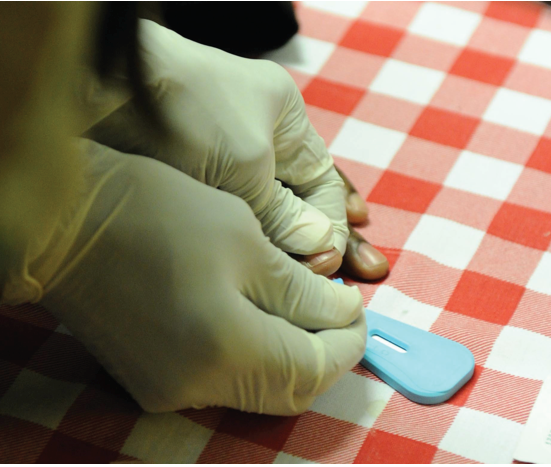 The Free State has achieved significant success in delivering health care, particularly anti-retroviral treatment, to residents of the province.
The Free State has achieved significant success in delivering health care, particularly anti-retroviral treatment, to residents of the province.
A total of 193 869 patients are on anti- retroviral treatment (ART) in the Free State, says Premier Ace Magashule.
This was an increase from 53 152 in 2009. Over the past five years, 736 medical practitioners, 111 medical specialists and 2 035 nurses were added to the province’s health care system.
On job creation initiatives, the Expanded Public Works Programme (EPWP) continued to be a vehicle for creating jobs in the province.
“We have created 233 359 work opportunities over the past five years through programmes such as the Township Revitalisation Programme, Community Work Programmes, National Youth Service Programme, Cemetery Maintenance Programme and Food for Waste Programme and the Door-Knocker programme,” said the Premier.
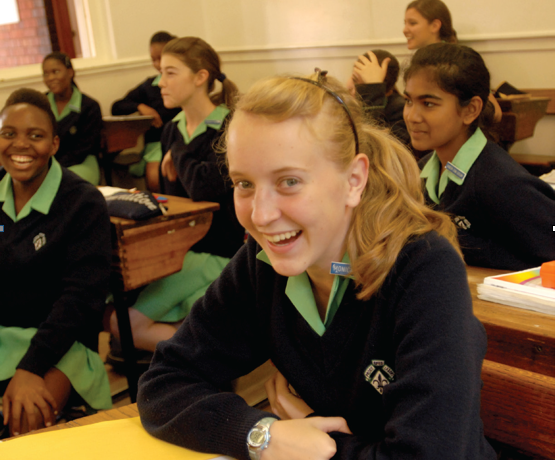 He also outlined achievements in education sector which include:
He also outlined achievements in education sector which include:
- The province beating its own target of reaching a matric pass rate of 85 per cent by achieving an 87.4 per cent pass rate in 2013 - the highest pass rate in the country.
- Building 18 schools in the past five years.
- The number and rate of bachelor passes significantly increased over the past five years, from 5 987 in 2009 to 8 961 in 2013.
- 85.5 per cent of schools in the province are no-fee schools which benefit 533 681 learners in the province.
- Every learner in a no-fee school receives at least one nutritious meal a day.
- 236 local women cooperatives provide meals to
- 481 schools in the province’s five school districts.
- 18 ECD centres have been built with a further four centres renovated over the past five years.
- Mud structures have also been eliminated with 185 schools built in the past 20 years. Of these, 18 were constructed in the last five years.
Limpopo
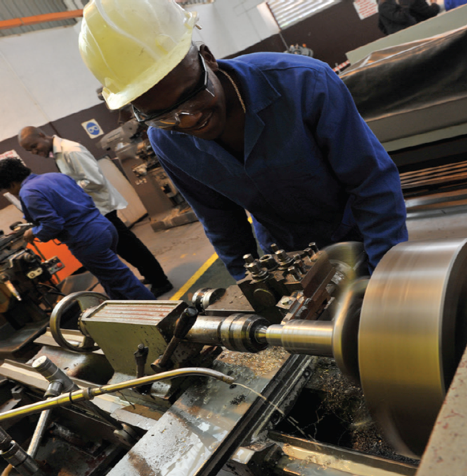 Limpopo has also made great strides in health care over the past five years, according to Premier Stanley Mathabatha. The number of patients on ART in- creased from 26 650 in 2009, to almost 50 000 during the current financial year. In an effort to address the shortage of doctors, the province has set aside R20 million to finance young people to study medicine in Cuba.
Limpopo has also made great strides in health care over the past five years, according to Premier Stanley Mathabatha. The number of patients on ART in- creased from 26 650 in 2009, to almost 50 000 during the current financial year. In an effort to address the shortage of doctors, the province has set aside R20 million to finance young people to study medicine in Cuba.
Limpopo is also in a good position when it comes to employment.
- The official unemployment rate in Limpopo is at 16.9 per cent, rep- resenting a 2.2 per cent decrease compared to 19.1 per cent in the cor- responding period in 2012. This decrease is as a result of government’s roll out of massive infrastructure projects such as the building of the Medupi power station in Lephalale.
- Through the Extended Public Works Programme (EPWP) programme, 591 494 job opportunities were created.
With regards to tourism, the Premier noted that since 2004, the private sector and government had invested R1.6 billion in tourism infrastructure.
This investment resulted in no less than 23 000 sustainable jobs being created in the sector.
KwaZulu-Natal
KwaZulu-Natal is a stable, peaceful and fast developing province that has made tremendous progress since 1994, according to Premier Senzo Mchunu.
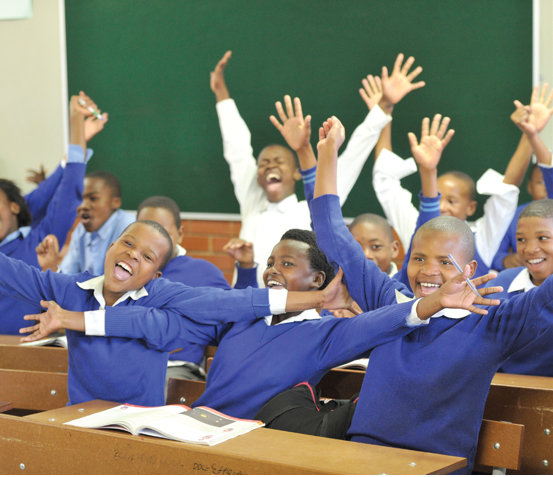 In his State of the Province Address, Premier Mchunu said KZN was committed to ensuring a better quality of life for all.
In his State of the Province Address, Premier Mchunu said KZN was committed to ensuring a better quality of life for all.
Noting the achievements made in education, the Premier said:
- Since 2009 almost R13 billion had been pumped into 3 500 education infrastructure projects.
- 4 488 schools now have access to electricity.
- 3175 schools have been supplied with ICT equipment.
- 294 schools now have laboratories.
- There are 406 mobile classrooms across the province.
- Grade 12 results have also increased by 15.3 per cent since 2008. In 2008 the matric pass rate was at 57.8 per cent and in 2013 it stood at 77.4 per cent.
Government’s contribution has also seen an increase of up to 80 per cent of no-fee schools in the province receiving free meals through the National Schools Nutrition Programme (NSNP).
To date, 2.1 million learners out of a total of 2.8 million are direct beneficiaries of these meals daily and the number of no-fee schools increased from 1 879 in 2008 to 4 739 in 2013, out of a total of 6009 public schools.
 The province is also committed to improving health care facilities and reducing the burden of disease in the province, said the Premier.
The province is also committed to improving health care facilities and reducing the burden of disease in the province, said the Premier.
Persistent interventions from government led to the reduction in mother-to-child transmissions from 20.8 per cent in 2002 to 1.5 per cent in 2013.
In 1994 there were only 240 clinics in KwaZulu-Natal and to date there are a total of 644, which cost almost R990 million. The creation of jobs for the youth has also spiked. Since 2010, the province has created 600 000 jobs, largely from the manufacturing, trade and community services sectors.
More jobs, better lives for Reitz residents
More jobs, better lives for Reitz residents sadminAdolphina Mojatau's life has changed dramatically over the past couple of years, ever since she started working at the Granfield Chicken Farm Abattoir.
In the year and a half she has been at the abattoir, Mojatau has benefited from a number of skills development programmes and climbed up the ranks.
“In such a short time, I have been promoted three times. This is not a company that one enters as a general worker and stays put for years at that level. The opportunity for growth is endless. That is what motivates me and allows me to inspire others working here,” she said.
The mother of two is now a quality supervisor.
“I am very proud of what I have achieved and I am grateful to be able to work on a project that ensures the best quality for our consumers.”
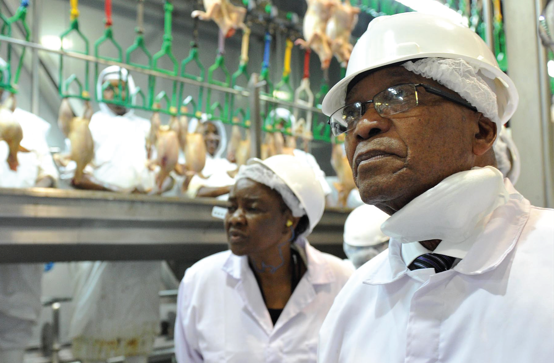 Granfield Chicken Farm Abattoir is a job creation project that is improving the lives in the Free State community of Reitz.
Granfield Chicken Farm Abattoir is a job creation project that is improving the lives in the Free State community of Reitz.
The project, co-funded by the Department of Labour through the Unemployment Insurance Fund (UIF) and the Industrial Development Cooperation (IDC), will see millions pumped into creating jobs and rural growth within the province.
As part of celebrating what the country has achieved over the past two decades, President Jacob Zuma recently visited the project.
“We are currently taking stock of achievements scored in the past 20 years, with a focus on how the quality of lives of South Africans has improved.
“We have made a lot of progress in improving the quality of life and South Africa is a much better place now than it was before 1994. Last year more than 650 000 jobs were created - this means that progress is being made,” the President said.
South Africans must make the most of government programmes and other economic opportunities that come their way to create a better life for themselves, said President Zuma. Many South Africans have already done so and are the faces of that emerge in the many success stories to come out of the country in the past 20 years, he added.
Granfield Chicken Farm Abattoir is one of the 205 business initiatives assisted by government, the UIF and the IDC, to support job creation and job retention.
To date, government has invested R350 million in the project, with UIF and the IDC contributing R65 million and R23 million respectively.
Thanks to the funding, in just two years the project has managed to increase its capacity from producing only 9 000 chickens a day in 2012 to a staggering 130 000 chickens a day. The abattoir has also created 1 047 jobs for locals.
“This is great news for many families in the area,” said President Zuma.
According to the President, the funds for the project were made available through the UIF and the IDC bond, which was launched in April 2010. The bond, with an initial investment of R2 billion, was created to provide relief to workers who had lost their jobs due to the economic recession in 2008 and help workers find new employment. Through 205 business initiatives, the bond has created 22 263 new jobs and saved 20 288 jobs.
“It is a remarkable story indeed for our country. It is amazing that a recession can actually be turned into an opportunity for growth and development,” he noted.
Due to the demand for assistance from the UIF and IDC, an addition R2 billion bond was allocated. More than half of the second bond will be dedicated to creating jobs in Mpumalanga, North West, Free State, Eastern Cape, Northern Cape and Limpopo.
President Zuma added that the abattoir project had been innovative and had not relied on government to start it. He explained that government stepped in with funding and technical assistance at a later stage.
“This culture of Vuk’uzenzele - of people doing things for themselves - must be promoted countrywide so that we can build a truly prosperous society,” he said.
According to Granfield’s managing director Sas Kasselman, what makes the project a success is the fact that employees are also beneficiaries of a 23.1 per cent stake in the abattoir. “This makes the project’s success a personal success for the beneficiaries as well. It creates a social responsibility among employees,” Kasselman explained.
Skills development is also a crucial factor in the success of the abattoir. Through the employment training and development programme, workers at the abattoir are trained and promoted continuously.
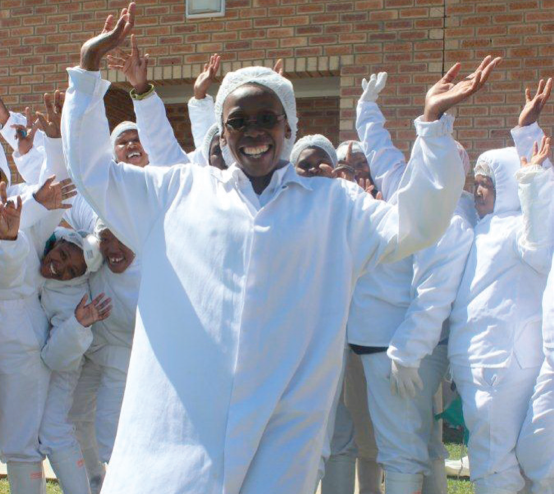
“Job growth and skills development sharing is extremely crucial to the growth of any project of this magnitude. We ensure that employees on various levels are trained and they in turn share their training and transfer skills learnt to their fellow workers. It is a continuous learning environment at the abattoir,” said Kasselman.
Mojatau is testament to this and is proud of the work she does at the abattoir.
She explained that a typical day means going through almost 50 000 chickens during the day shift and another 50 000 on the night shift.
“My team makes sure that every chicken that enters our receiving bay undergoes an anti-mortem. This is where we check that the chickens have no diseases and are healthy for consumption. It is a tough job but we have to ensure that South Africans get the best quality product on the shelves,” she said.
To date, Mojatau has completed various training programmes in health and safety, food safety management, hazard training, meat inspection and examination, internal audit and administration.
Due to her success in these, she is also an internal training officer and shares her skills with new employees at the abattoir. According to Mojatau, many South Africans, especially those in the rural areas, do not know much about the poultry industry and the opportunities it offers.
“Government is providing so many opportunities but people cannot sit back and wait for a job to fall into their laps, they must be active and open to new challenges,” she said.
Those who took on new challenges at Granfield Chicken Farm Abattoir have helped it become a successful business that supplies local and neighbouring markets as well as big retailers such as Pick n Pay and Shoprite.
Budget 2014: Moving South Africa forward
Budget 2014: Moving South Africa forward sadminFinance Minister Pravin Gordhan delivered the last budget of the current administration to Parliament recently, outlining how South Africa will pursue economic growth and an expand social services in the years to come.
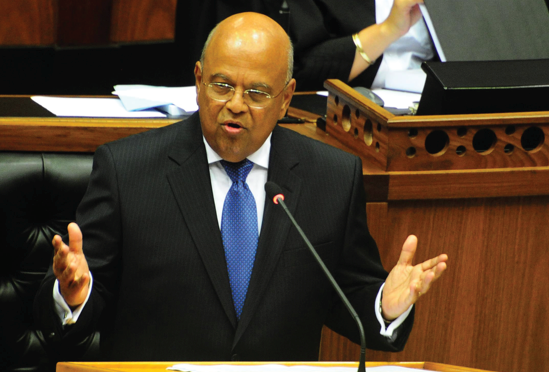 Tabling his 2014 Budget Speech in Parliament, Minister Gordhan said over the next five years government would focus its efforts on economic growth.
Tabling his 2014 Budget Speech in Parliament, Minister Gordhan said over the next five years government would focus its efforts on economic growth.
This would be backed up by plans to increase investment in electricity and transport infrastructure.
He added that increased spending on public infrastructure would encourage private investment, while stronger employment growth would contribute to increased household consumption.
20 years of achievement
The South African economy has transformed over the past two decades. The Minister said that despite the challenges the country continues to face, SA was a wealthier society today, with greater access to economic opportunities and reduced levels of poverty.
Some of SA’s successes pointed out by the Minister include:
- Since the introduction of the school nutrition programme in 2004, it has expanded and currently feeds 9.2 million school children daily.
- In 1996, 19.1 per cent of adults received no schooling. By 2011 this number had decreased to 8.7 per cent.
- The number of households with access to flush or chemical toilets almost doubled from 4.6 million in 1996 to over 9 million in 2011.
- The number of households with access to piped water increased from 9.1 million in 1996 to 13.2 million in 2011.
- Between 1994 and 2013 government built about 2.7 million homes.
- South Africa runs the world’s largest anti- retroviral (ARV) programme, with over 500 000 new patients put on ARVs annually.
- The rate at which children under the age of one die has dropped from 45 per 1 000 live births in 1994 to 33 per 1 000 live births in 2012.
 Improved housing
Improved housing
More than 12 million people now have a place to call home after government invested more than R100 billion in building new homes since 1994.
Social grants
The social assistance programme is government’s most direct means of fighting poverty. Over the past decade, the number of social grant beneficiaries has doubled from 7.7 mil- lion in 2003/04 to 15.8 million in 2013/14.
The Minister also announced the amount paid to social grant beneficiaries would in- crease as follows:

Education and training
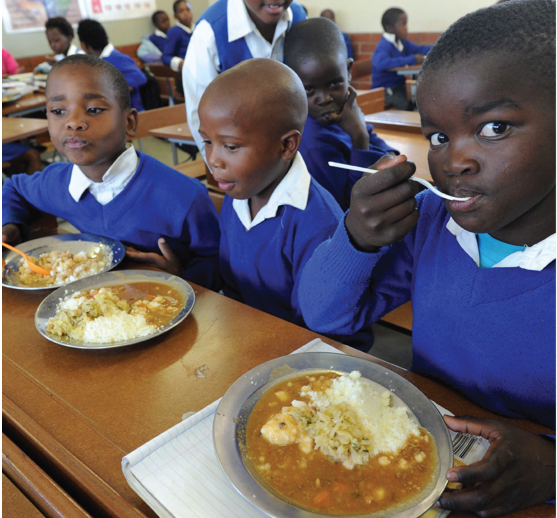 The Minister said government would rebuild 433 schools in the next three years. He pointed that 60 per cent of schools do not charge fees and this year, 8.8 million learners will have access to free education. Over the next three years, R78 billion will go towards university subsidies and R34.3 billion to building schools.
The Minister said government would rebuild 433 schools in the next three years. He pointed that 60 per cent of schools do not charge fees and this year, 8.8 million learners will have access to free education. Over the next three years, R78 billion will go towards university subsidies and R34.3 billion to building schools.
Housing
Six metros have been targeted for a new grant of R300 million per year to build their capacity to plan for integrated human settlements. Government has also set aside R899.2 million in 2014/15 for provinces to upgrade sanitation infrastructure.
Hospitals
The money spent on clinics, hospitals and com- munity facilities will increase to R9.4 million in 2016/17 from R9 billion in 2012/13. The priority will be refurbishing clinics and hospitals.
Sanitation improvements
Over the next two years, R1.9 million will be spent on eradicating the bucket system and R15.4 billion has been set aside for regional bulk infrastructure over three years.
On job creation initiatives, the Minister noted:
- Since its launch in 2004, the Expanded Public Works Programme has created more than five million mostly short-term and part-time jobs. The next phase should create six million jobs.
- The Community Work Programme guarantees participants work two days a week, or eight days a month, with a strong focus on generating local economic activity.
- The Employment Tax Incentive launched in January 2014, subsidises the salaries of newly recruited 18- to 29-year-old workers.
- The National Youth Service Programme trains youth to be artisans for the built environment.
Improving primary health care
The government provides primary health care free of charge and other health services at subsidised rates for poor South Africans. Over the next three years, government will:
- Spend R77 billion on primary health care services and R240 billion on public hospitals.
- Launch the Office of Health Standards Compliance in 2014/15 as an independent public entity responsible for inspecting health facilities.
- Allocate R600 million for the introduction of the new Human Papilloma Virus (HPV) vaccine, which prevents cancer of the cervix.
- Allocate a further R1 billion for the HIV and AIDS conditional grant in 2016/17 to continue the roll out of anti-retroviral treatment. A total of R2.5 million people are currently on treatment and 500 000 new patients are expected to join the programme each year.
- Accelerate the provision of infrastructure in the pilot districts of the National Health Insurance. R19.3 million will be set aside for refurbishing clinics and hospitals and R1.2 billion for the contracts of general practitioners.
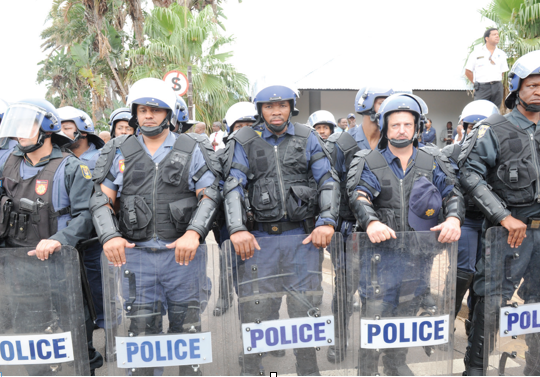 Fighting crime
Fighting crime
- Spending on defence, public order and safety will grow from R154 billion in 2013/14 to R163 billion in 2014/15
- The South African Police Service will get R78.1 billon, Correctional Services R19.7 billion, courts R17.9 billion and the South African National Defence Force R47.9 billion.
Agriculture support
The Agricultural Policy Action Plan will support the NDP’s target of creating jobs in the agricultural sector. Government will spend over R7 billion on grants to provinces to support about 435 000 substence and 54 500 small farmers.
 Fuel levies
Fuel levies
The Minister announced that the general fuel levy and the Road Accident Fund levy would increase by 12c per litre and 8c per litre respectively from 2 April 2014. This will push up the general fuel levy to R2.25 per litre on petrol and to R2.10 per litre on diesel.
Infrastructure development
Government is committed to investing in infrastructure that improves lives. In 2014, R11 billion will go to PRASA for new rolling stocks and the upgrade of signalling infrastructure.
Industry support
R10.3 billion will go to manufacturing development incentives, R15.2 billion has been set aside for economic competitiveness and support packages for business and R3.6 billion for job creation at special economic zones.
SA elections set for May
SA elections set for May sadminBudget 2014
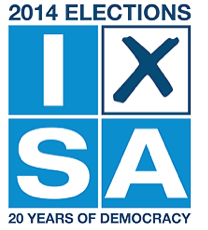 Twenty years after the first democratic elections , South Africans will return to the polls to cast their votes on 7 May.
Twenty years after the first democratic elections , South Africans will return to the polls to cast their votes on 7 May.
President Jacob Zuma proclaimed the date for the country’s fifth national elections recently.
“These are historic elections as they take place during the 20th anniversary of our freedom from apartheid bondage.
“They provide an opportunity for us to further consolidate the democracy and freedom that we worked so hard to achieve, and for which esteemed South Africans such as former President Nelson Mandela sacrificed life’s comforts for,” said President Zuma.
He called on all South Africans to show tolerance during the elections.
“I urge all our people to promote peace, tolerance and peaceful co-existence as we move towards the elections and during the elections.”
President Zuma said he was proud of the progress the country had made since 1994 and urged voters to turn out in their numbers to make the elections a success.
Parents must educate children on rights
Parents must educate children on rights sadminBudget 2014
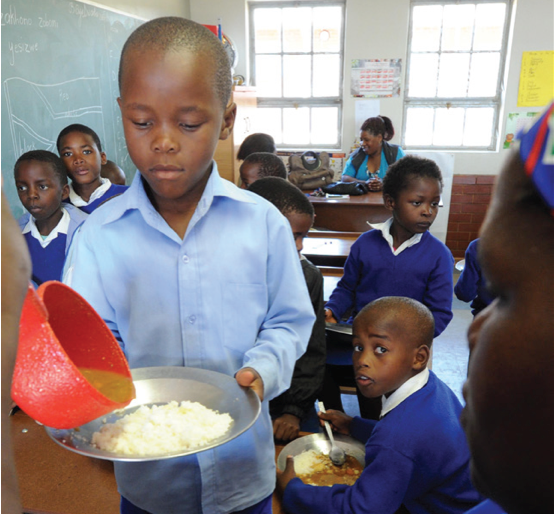 During Human Rights month, which is commemorated in March, government has called on parents and communities educate children on their rights, as enshrined in the Constitution.
During Human Rights month, which is commemorated in March, government has called on parents and communities educate children on their rights, as enshrined in the Constitution.
Section 28 of the Constitution of South Africa is devoted to children and outlines the rights that they are entitled to. Acting Government Communication Information System (GCIS) CEO Phumla Williams said: “It is important that children are cognisant of their rights. Government has played a significant role in ensuring that there are relevant legislations and mechanisms in place to ensure children’s rights are not infringed.
“There are also government-led outreach initiatives that educate the public on the rights of children. However, parents and communities also play an integral part in punting the message.”
Government called on parents, communities and children to engage in conversations that promote the rights of children and educate them on reporting any suspicions of violation of their rights.
“Parents should continually engage their children about issues such as rape, inappropriate touching, bullying, violence and abuse, amongst others. The important step is for a child to report any incident or behaviour that may be associated with the infringement of their rights,” said Williams.
Children are encouraged to report such incidents to parents, teachers, or any one else they trust. Children can also call Childline on 08 000 55 555.
“Working together, let’s continue making South Africa a better place to live in,” she added.
N West learners reap benefits of democracy
N West learners reap benefits of democracy sadmin
Abram Onkgopotse Tiro was a South African student activist and black consciousness militant murdered by the apartheid state. He was born in Dinokana, a small village near Zeerust in the North West.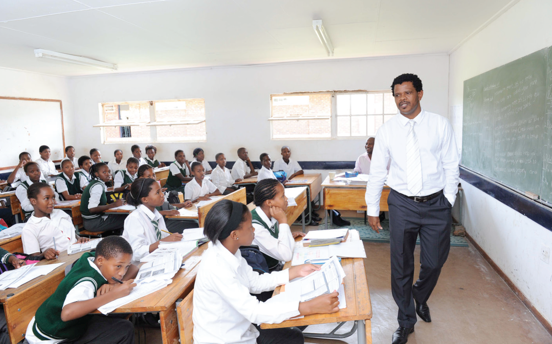
Onkgopotse means “God has remembered me” and some say Tiro will now forever be remembered because of the Onkgopotse Tiro Comprehensive School.
The North West Department of Education opened the school 2004, ensuring that children living in farming communities received an education.
It is one of the many schools built since 1994 to open the doors of education to the previously disadvantaged.
Access to education has improved over the past two decades with more learners attending school than ever before.
In 1996 the South African Schools Act made schooling compulsory for children aged seven to 15.
In 2012 enrolment at primary schools showed that the country had achieved close to universal access for both genders.
Poverty has been a contributing factor to learners not attending school. To tackle this government declared some schools no-fee schools and provides nutritious meals to learners through the School Nutrition Programme. Onkgopotse Tiro Comprehensive School is a no-fee school and also benefits from the School Nutrition Programme.
Learners receive four meals a day and a mobile clinic also visits the school every two weeks to attend to learners’ health.
A former military base camp was transformed to give the community Onkgopotse Tiro Comprehensive School.
The school accommodates 1 061 learners from Grades 1 to 12. Of these 661 are day scholars and 400 are boarders.
Teacher Kgonathi is the school’s principal. He jokes that his learners call him ‘Teacher teacher’.
“The name given to me by my parents is Teacher and I’m a teacher by profession which makes Teacher teacher,” he laughs.
“The aim of the school is to provide education to children whose parents are farm workers. This is the vulnerable community who have difficulty accessing education,” Kgonathi adds, on a more serious note.
Learners at the school come from the neighbouring farms of Lichtenburg, Zeerust, Setlakgole and Swartkopfontein.
Kgonathi explains that learners who stay some distance from the school live on the school property. For the others, the department provides a school bus.
Onkgopotse Tiro Comprehensive School’s first matric learners achieved a disappointing pass rate of just 24 per cent.
Kgonathi was brought in by the department in 2008 to improve on this pass rate and hard work from everyone at the school saw it increase drastically to 100 per cent in 2012 and 2013.
He explains that before the school opened some children from the neighbouring farms did not go to school.
“Some children were working, there was an element of child labour. We still have instances of learners dropping out of school during harvest season and I have to explain to parents that child labour is against the law. I also speak to farm owners reminding them that having children working on farms is a criminal offence.”
According to the 1996 Census, enrolment for the five-year-old age group was at 22.5 per cent. This figure increased to 81.2 per cent in the 2011 Census.
As a result of improved infrastructure, a higher proportion of younger children now have access to classroom facilities. South Africa is on track to meet its Millennium Development Goal (MDG) of achieving universal primary education by 2015.
Over eight million learners, approximately 70 per cent of all learners attend no-fee schools.
By providing children with meals at school, the National School Nutrition Programme has contributed to learners’ regular attendance and also ensures that they can concentrate in the classroom without worrying about food. Learners at Onkgopotse Tiro Comprehensive School benefit from both the School Nutrition Programme and the no-fee policy. Kgonathi says because of programmes such as these, the lives of the learners at his school have improved since democracy
Improved school infrastructure for SA’s learners
Improved school infrastructure for SA’s learners sadminAbout 20 years ago, the sight of children sitting in classrooms built from mud with no electricity, water or sanitation was all too common.
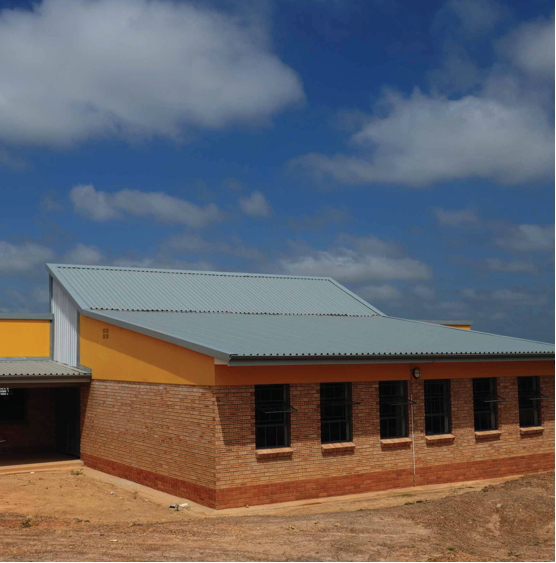 But then a democratic government came into power and with it came efforts to improve school infrastructure so that South Africa’s children and teachers have facilities that are suitable for learning.
But then a democratic government came into power and with it came efforts to improve school infrastructure so that South Africa’s children and teachers have facilities that are suitable for learning.
In 1994 government inherited a large number of schools that were without water, sanitation and electricity, the bulk of these in the Eastern Cape.
At the time, the school infrastructure backlog was at an all time high. In 1996, 59 per cent of schools were without electricity, 34 per cent without water, 61 per cent without telephones and 82 per cent without a library.
The Accelerated Schools Infrastructure Development Initiative (ASIDI) is one the programmes introduced by government to address this backlog.
The R8.2 billion public-private programme aims to eradicate the 496 mud schools in the country, provide water and sanitation to 1 257 schools and electricity to 878 schools by March 2016.
From July 2013 to December 2013, ASIDI handed over one school per week in the Eastern Cape.
ASIDI has already delivered water to 203 schools, sanitation to 226 schools and electricity to 150 schools.
In addition to ASIDI, the school build programme delivered 370 new schools, replacing mud schools and other unsuitable structures around the country.
The Tshantshala Senior Primary School in the Gugwini village is one of the schools to benefit from the ASIDI programme.
Situated just outside Lusikisiki, the school stands as a beacon of hope for the local community as they now know that their children have a decent place to learn. The new school boasts, among others, 14 classrooms and two water tanks and was built at a cost of R9 million.
Prior to the building of the school, learners in Gugwini used to travel more than 10km to attend school in the neighbouring villages.
A teacher at the school, Zandile Magobongo, said that teaching in the new building has become more exciting. “In the past, we used to teach under difficult conditions. The learners were crammed in one classroom and they were unable to concentrate,” she said.
Previously, the learners were housed in a local church after the structure they had been using as a school was blown away by strong winds.
Magobongo said the learners were now more interested in learning.
A parent, who has two children at the school, Masisile Manzhele, said that she was happy with the school. “I’m happy that my kids will learn in a safe environment and that they will no longer have to travel to neighbouring villages to go to school.”
A Grade 3 learner at the school, Siphokazi Mbele, was excited to be in the new school. “I want to be a teacher when I finish school,” she said.
Higher education grooming students for success
Higher education grooming students for success sadminEducation has always ranked high on the democratic government’s list of priorities, with the ultimate aim to ensure all South Africans enjoy the benefits of education.
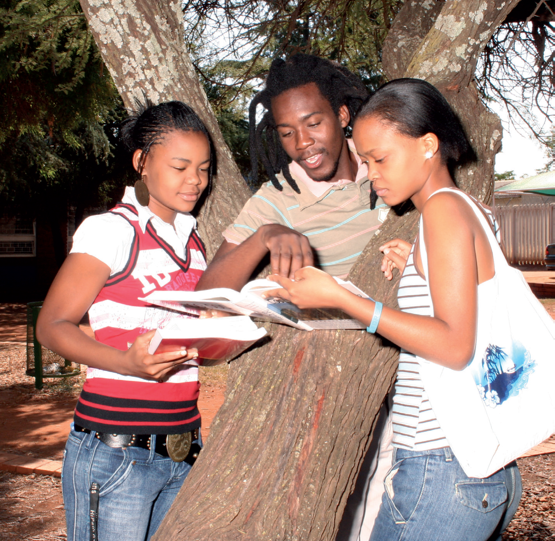 To help achieve this, in 2009 the National Department of Education was split in two - the Department of Basic Education (DBE), and Department of Higher Education and Training (DHET).
To help achieve this, in 2009 the National Department of Education was split in two - the Department of Basic Education (DBE), and Department of Higher Education and Training (DHET).
The DBE was tasked with focusing on primary and secondary schooling, while the DHET turned its attention to Further Education and Training (FET).
FET covers a wide range of tertiary training, including career-oriented education and training offered in technical colleges, community colleges and private colleges.
FET colleges
The DHET’s focus has been on implementing a comprehensive turnaround strategy for all colleges. This saw 152 technical colleges across the country merge into 50 FET colleges with 264 campuses across country. These colleges offer a range of programmes that cater for most students’ needs, ranging from engineering, business studies, art and music to food services. The DHET is ensuring that there are FET colleges in every province to provide tertiary opportunities to young people in nearby communities.
According to the DHET, FET college enrolments increased from 271 900 in 2000 to 657 690 in 2012, thanks to the introduction of fee-free education for poor students and the expansion of shorter skills courses offered at FET colleges with the assistance of the Sector Education and Training Authorities (SETAs).
By 2012 women made up more than 58 per cent of students enrolled at FET colleges. To further increase FET enrolments, the DHET launched the Apply Now campaign, which encourages learners to think about their future and career path before it’s too late. The campaign also promotes FET colleges as institutions of choice.
New universities
This year two new universities - the University of Mpumalanga in Nelspruit and Sol Plaatje University in Kimberly, Northern Cape – opened their doors.
The Sol Plaatje University (SPU) offers three programmes: the Bachelor of Education in Secondary Mathematics, Science and Technology Teaching; the Diploma in Information Technology Applications and the Diploma in Retail Management.
The University of Mpumalanga (UMP) offers a Bachelor of Education in Foundation Phase Teaching at the Siyabuswa Campus, and the Bachelor of Agriculture and Diploma in Hospitality Management at the Nelspruit Campus. Both universities have started with a modest number of students, 135 at SPU and 140 at UMP, and will develop their capacity in line with the growth of quality infrastructure and human resources. The number of students is expected to increase over the 10-year development plan. SPU will grow to accommodate 7 500 students and UMP will accommodate 15 000.
Post school
Millions of young South Africans cannot continue their studies after school and join the ranks of the unemployed. To remedy this, the DHET recently launched the White Paper on Post School Education and Training. The paper aims to improve access to and the quality of education, while providing training opportunities for the youth at FET colleges, which will soon be renamed Technical and Vocational Education and Training (TVET) colleges.
The White Paper also aims to improve the
higher education system by upgrading the quality of programmes offered at TVET colleges; ensuring lecturer posts are filled and seeing to it that that more support is given to learners, particularly in rural areas.
Community colleges
The White Paper also aims to expand the skills development of school leavers and anyone who wants to gain skills. New community colleges will be established across the country and will address the education and skills gap for South Africans who never attended school. The introduction of these community colleges, which will be piloted first, will make a significant difference to those who never attended school and will give them a second chance.
The DHET’s goal is to achieve 1.6 million enrolments at public universities, 2.5 million at TVET colleges and one million at community colleges by 2030. It is also envisioned that by 2030 there will be at least one institution offering TVET programmes in every district in the country.
Decade of the Artisan
To promote skills development and training further, the department declared 2013 as the Year of the Artisan, under the theme ‘It’s cool to be an Artisan’. Due to the programme’s success, it has now been extended to the Decade of the Artisan. Through this programme, the DHET aims to produce 30 000 artisans a year.
FET colleges the way to go
FET colleges the way to go sadminA Further Education and Training (FET) college may not be everyone’s first choice for a tertiary education but the skills it equips you with will give you an edge in the workplace.
 This is the view of FET college graduate Tshepo Molokwane. “An FET college education is the way to go,” says the digital marketer.
This is the view of FET college graduate Tshepo Molokwane. “An FET college education is the way to go,” says the digital marketer.
Molokwane started his business Nugen Media - an online digital marketing service specialising in web design and social media - after completing a marketing management course at the Ekurhuleni East FET College in Springs.
Molokwane, who grew up in Brakpan, Gauteng pursued a career in marketing after matriculating from Brakpan High School in 2009.
“After doing my research I decided that an FET college qualification would suit me best because I wanted a quality qualification that would allow me to learn in a practical environment. I am not a bookworm, hands-on experience is the best learning tool for me,” he explains.
A practical, hands-on tertiary experience is exactly what Molokwane got, just like other students who study at certified FET colleges. Aside from the usual tests, what stood out the most for him was the wealth of experience and skills gained as he worked and developed marketing campaigns and strategies.
“Through trial and error of business plans, I learnt what marketing strategies working in which environments and this has not only made me a better marketer but a better businessman as well,” says Molokwane.
His one-of-a-kind learning equipped him with the necessary skills and expertise to create and start his own business. Today he has a number of successful projects under his belt and his business is growing from strength to strength.
“As an aspiring student, you need to be sure of what type of education best suits you. Ask yourself does the tertiary institution you chose challenge you to be the best student you can be?”
According to the Ekurhuleni East FET College principal Happy Sibande, an FET college education is the way to go in today’s evolving environment.
The private and public sector require a certain standard of skills that may be scarce in a particular field - this is what an FET education tries to tackle.
“Our colleges have become the popular choice of the majority of matriculants who cannot enrol at traditional universities. To date FET colleges have produced many career leaders and entrepreneurs.
“We aim to create qualifications and graduates with the necessary skills needed in today’s workforce,” she says.
SA turns the tide on HIV and AIDS
SA turns the tide on HIV and AIDS sadminIt’s been two weeks since Thabisile Majola* came back home after spending almost five days in hospital. Her parents and younger brother are relieved to have her home.
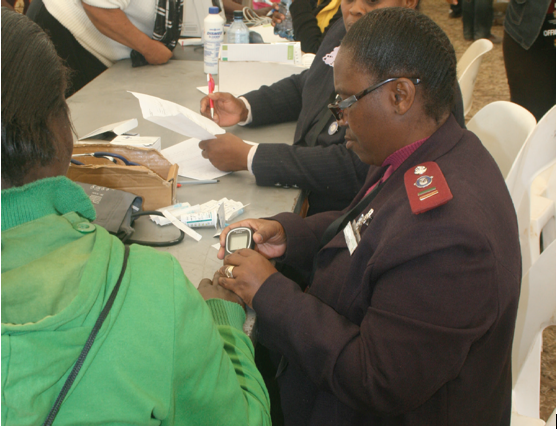 But a week later, at about 10pm, as her mother prepares to go to bed, she hears screams coming from her daughter’s bedroom. At this stage, everyone knows it’s time.
But a week later, at about 10pm, as her mother prepares to go to bed, she hears screams coming from her daughter’s bedroom. At this stage, everyone knows it’s time.
Majola’s condition has suddenly worsened. And as her father speeds off to the hospital, everyone in the car wonders in silence whether she will be fine.
This was seven years ago, when Majola, 34, was at war with HIV.
The Durban resident was a regular visitor to hospitals. At that stage, she was not eligible for anti-retroviral (ARV) treatment because her CD4 count was at 300. At that time the lifesaving treatment was only available to patients with a CD4 count less than 200.
Majola’s family had given up hope that she would ever recover. But her situation started to change in 2009, when, on World AIDS Day, President Jacob Zuma announced life-changing policies related to HIV and AIDS and the country took a new direction in the fight against the disease.
Like many others, Majola saw a number of people including friends and family succumb to HIV. This, she says, was mostly due to lack of access to treatment and information about the disease.
“My brother contracted HIV in the early 90’s and at the time we didn’t know much about the disease except that one got it by sleeping around with multiple partners.
“Because of the stigma attached to the disease, he never disclosed his status. Only my parents knew but they were in denial and chose to believe that he had been bewitched by our neighbour.”
In 2003, HIV hit the family again. This time, it was Majola’s sister. She tried to fight the disease by taking immune system boosters but without access to ARVs, she became weak and ill. By the time she was finally eligible to take the treatment, it was already too late. She lost the fight the following year, at the tender age of 20. Since 2009, government has turned the tide in the fight against HIV. People like Majola say the ARV and prevention of mother-to-child transmission (PMTCT) programmes have had a profound impact on the health of South Africans living with the virus.
Policies the current administration announced included that HIV positive people with a CD4 count of 350 or less could receive ARV treatment. Pregnant women who have the virus, regardless of their CD4 count, now have access to treatment. Women are also put on treatment at 14 weeks to protect the baby.
The number of people on ARV treatment has increased from 923 000 in February 2010 to a staggering 2.4 million in 2013.
Health facilities providing ARVs increased from 490 in February 2010 to just over 3 500 public facilities in 2013.
And government seems to have realised that the stigma, which is still associated with HIV, is probably the greatest danger in the fight against the virus.
With this in mind, government launched the HIV Counselling and Testing (HCT) campaign in April 2010, which has reached over 20.2 million South Africans.
The good news is that HIV prevalence among youth between the ages of 15-24 has decreased from 9.7 per cent in 2009 to 8.5 per cent in 2013. The country has also made progress in the PMTCT programme. Nationally, there has been a significant reduction in mother-to-child transmission of HIV from about 8 per cent in 2008 to 2.5 per cent in 2012. As a result, more 100 000 babies were protected from HIV infection.
Without the programme, people like Majola and her child would not have survived.
She knew about the programme because the health professionals at the clinic where she collects ARVs encourages people to come forward immediately if they suspect they are pregnant. “The minute I became aware of my condition, I informed them and was put on the programme. My boy was born HIV negative and is very healthy.
“I followed all the instructions I was given after giving birth to my son and that saved his life … the experiences I went through at the time made me appreciate life more.”
Some HIV patients default in their medication because of the amount of pills they have to take a day.
In April last year, the national Department of Health introduced the Fixed-Dose Combination (FDC) of ARVs. The FDC is a combination of all three ARV pills - namely emtricitabine, efavirenz and tenofovir. It allows those on treatment to take one ARV pill a day instead of three or more tablets.
It was first administered to all newly diagnosed patients that were eligible to be put on ARV treatment, pregnant women and HIV positive breastfeeding mothers, and later rolled out to all patients on ARV treatment.
Majola started with the FDC in November last year and says it’s much better than taking three pills. Her CD4 count is now over 400 and she feels stronger each day.
“I know that HIV will never destroy me, not as long as I have my treatment. It ended with my brother and sister, I refuse to be the next statistic,” she adds.
Majola has now intensified her fight against the disease.
She is speaking to young people about the importance of abstinence and safe sex and is looking forward to the day when she believes this country would have a new HIV infection rate of zero.
*Not her real name.
SA’s health infrastructure gets a boost
SA’s health infrastructure gets a boost sadminSouth Africa is set for a massive boost in science with the recent announcement that the country – together with eight African partner nations – will host the majority of the Square Kilometre Array (SKA) telescope project.
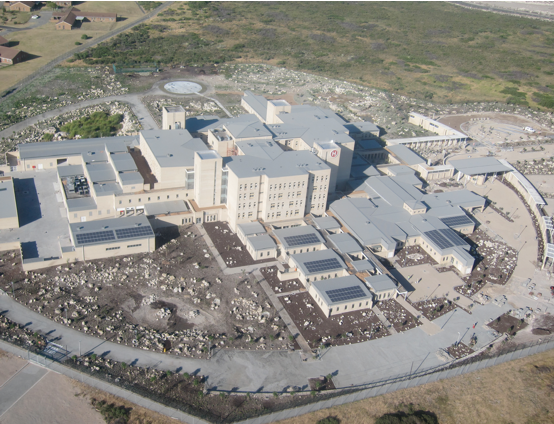 In 1995 the primary health care facilities providing services to communities was inadequate.
In 1995 the primary health care facilities providing services to communities was inadequate.
Back then there were only 0.8 clinics per 10 000 people, while the World Health Organisation recommends one clinic per 10 000 in rural areas.
Pre-1994 there were also many small, collapsing hospitals located close to each other, while other areas lacked health facilities.
In 2004, the Hospital Revitalisation Programme was designed to ensure the delivery of health facilities, taking into account infrastructure, health technology and human resources.
Since the Hospital Revitalisation Project commenced in 2004, 18 hospitals have been newly built or refurbished across the nine provinces. The democratic government also introduced a massive infrastructure programme that resulted in more than 1 500 health facility infrastructure projects being completed.
This included building new facilities, revitalisation of existing facilities and facilitating access to health care within a five kilometre radius of where people lived.
In his recent State of the Nation Address, President Jacob Zuma said: “Over the past five years, 300 new health facilities have been built, including 160 new clinics. Ten new hospitals have been built or refurbished in Ladybrand, Germiston, Mamelodi, Natalspruit, eThekwini, Zola, Bojanala, Vryburg District, Swartruggens, Khayelitsha and Mitchell’s Plain”
Govt urges youth to move SA forward
Govt urges youth to move SA forward sadminYouth matters
Government is expected to launch a R10 million scholarship fund to help youth, especially those in rural areas, to further their studies after school.
President Jacob Zuma made the announcement about the new Solomon Mahlangu Scholarship Fund, which will be launched this month, at the recent Presidential Youth Indaba on Jobs and Skills.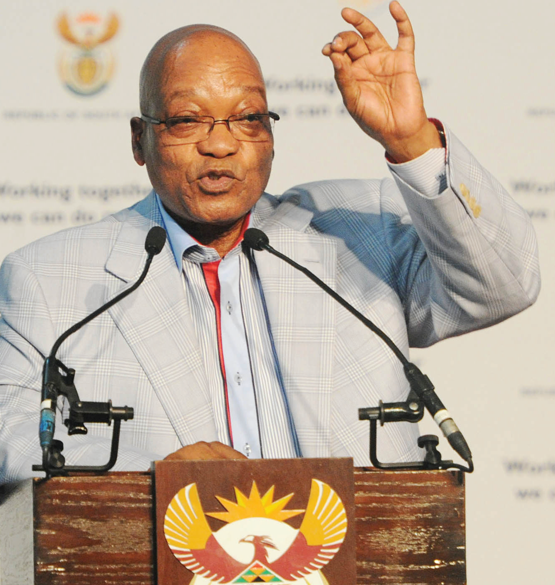
“On the 14th of March, we will launch the new Solomon Mahlangu Scholarship Fund, run by the NYDA (National Youth Development Agency). This is a R10 million fund designed to provide financial support to youth primarily in rural areas,” said President Zuma. The fund serves as a living memorial to freedom fighter Solomon Mahlangu (1956-1979) and its purpose is to give financial support to youth to help them to pursue quality education at an institution of higher learning.
The fund is accessible to deserving South African youth who meet the minimum entry requirements set by the NYDA - youth who have been admitted for study at credible universities and universities of technology, locally and internationally.
Addressing the indaba attended by about 500 young people from across the country, President Zuma urged the youth to dream big to move South Africa forward.
The indaba, which was held over four days, was a platform to give effect to the Youth Employment Accord as the country tries to find solutions to the high unemployment rate, especially among the youth.
The accord aims to improve the education and skilling of young people, as well as help them find jobs and start their own businesses.
In it, government also commits to increase the number of people employed in the public sector.
“You must dream about a prosperous South Africa, we dreamt about freedom and it happened,” said the President.
Government is investing heavily in education. To date over 8 000 youth been assisted to rewrite their matric, while 12 per cent of the population now hold a postgraduate qualification, up from 7 per cent in 1996.
The investment in education is designed to prepare youth for the second phase of the country’s freedom, “that of meaningful economic emancipation”, said President Zuma. Government believes that education and skills development is the most powerful weapon that the youth will need to run the economy.
South Africa has to build an inclusive economy that creates jobs and reflects the demographics of the country. Ownership, control and management of the economy has to be changed working together with business, labour and communities.
President Zuma asked the youth to start thinking about their contribution to growing an inclusive economy.
Speaking at the indaba, Economic Development Minister Ebrahim Patel said progress had been made since the signing of the accord in April 2013.
“There are now just over 6.1 million youth who are employed. Since the signing, youth employment rose by 420 000, the biggest rise in youth employment in a long, long time,” said Minister Patel.
In their declaration on the third day of the Indaba, youth movements (led by the South African Youth Council) reaffirmed their commitment to the accord as being the framework for youth employment.
The President also asked the youth to familiarise themselves with the NDP, which outlines a growing economy and creates jobs.
“Within the NDP are some instruments that we want you to know and understand very well as young people,” said the President.
He also stressed the importance of skilling and education the country’s youth.
“Youth development and empowerment is critical to the success of our democracy,” President Zuma added.
Bill of Rights
Bill of Rights sadminHuman Rights
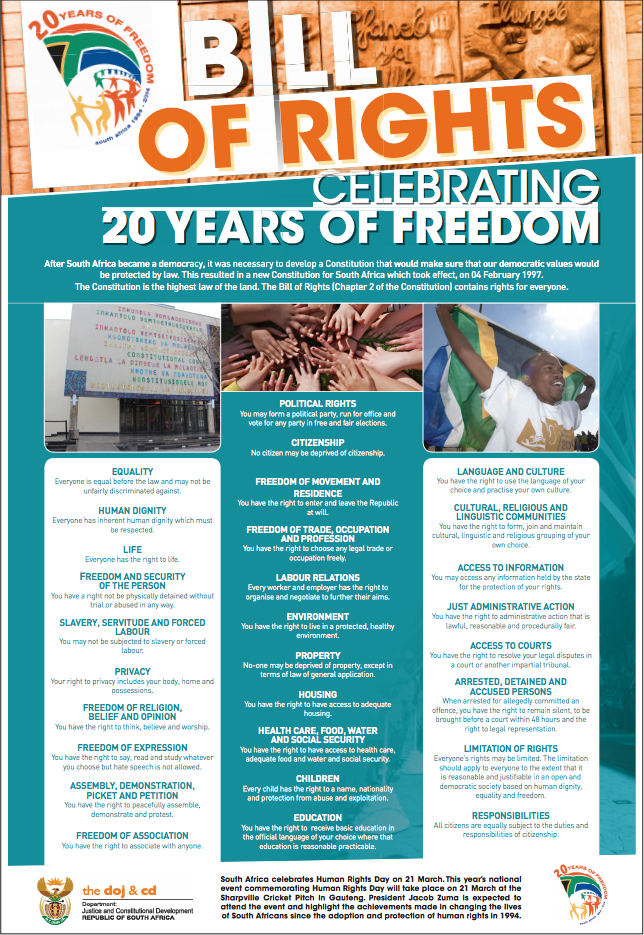
Agriculture grows employment
Agriculture grows employment sadminGovernment’s efforts to boost agriculture and rural development across the country are bearing fruits.
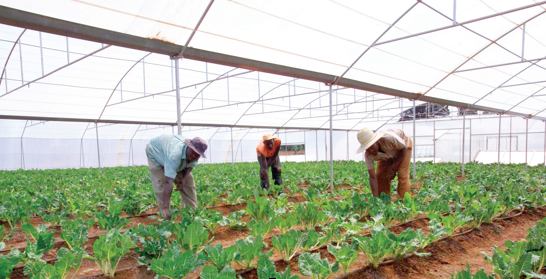 According to Economic Development Minister Ebrahim Patel, South Africa’s agricultural sector has made a contribution to employment since 2009.
According to Economic Development Minister Ebrahim Patel, South Africa’s agricultural sector has made a contribution to employment since 2009.
“Employment in agriculture grew by around 65 000 from December 2009 to December 2013, reversing a trend of job losses stretching back to the 1970s,” he said.
“In an effort to improve the rural economy, household income and access to nutrition, a total of 1 740 555 hectares of land were acquired, redistributed and restituted or restored from 2009 up to September 2013,” the Minister added.
About R20 billion was spent between 2009 and 2013 to implement land restitution and distribution. To ensure sustained production on productive land, 700 000 smallholder producers - including those under the recapitalisation and development programme - were supported through various initiatives, including access to finance and mentoring, he said.
Fetsa Tlala (End Hunger) Programme
The Fetsa Tlala programme, which aims to support emerging farmers, was launched in October last year by President Jacob Zuma.
Minister Patel said planting was taking place on 230 000 hectares of land in six provinces, with half of the land set aside for smallholders.
“A total of 10 271 resource-poor, historically disadvantaged producers were supported to access water for agricultural purposes and over 18 000 hectares were irrigated during this period. From 1 April 2009 until 31 December
2013, a total 2 400 000 hectares of land has been added to the area of land under rehabilitation and restoration.”
According to the Minister, a total of 3 486 000 hectares were cleared as part of follow-up treatment.
“A further 33 341 smallholder producers were assisted to access markets and 1 284 producer cooperatives and marketing depots were established in order to increase their competitiveness and take advantage of market opportunities,” he said.
An additional 22 cooperatives have been linked to the Department of Social Development’s Food for All programmes as part of procuring produce for social programmes from the very smallholders who are being supported by government.
Primary animal health care
“Furthermore, we have committed to extending the primary animal healthcare programme to smallholders in all provinces.
“In the past year, 23 mobile animal clinics were procured and delivered to remote rural areas,” Minister Patel said.
The scientific committee of the World Animal Health Organization (OIE) has confirmed the restoration of the foot and mouth disease (FMD) free-status, which enables South Africa to negotiate with the trade partners to lift the export ban on red meat.
Minister Patel said the confirmation of the restored FMD free-status is a positive step for trade and markets access for the industry.
Work opportunities
With regard to work opportunities in rural areas, Minister Patel said a total of 3 384 small rural enterprises were established in different sectors between 2010 and 2013.
“We were also able to link 170 196 poor and vulnerable South Africans, including recipients of social grants, to economic opportunities,” he said.
In rural areas, a total of 3 422 110 work opportunities were created through the Expanded Public Works Programme (EPWP), including the Community Work Programme, since 2010.
Most of these jobs were created under the infrastructure sector of the EPWP. An additional 798 586 full-time equivalent jobs were created in different sectors from 2010 to date.
Crafting hope for the Muyexe community
Crafting hope for the Muyexe community sadminVirginia Simango and her fellow villagers from Muyexe, outside Giyani, started an arts and craft business to create jobs and feed their families.
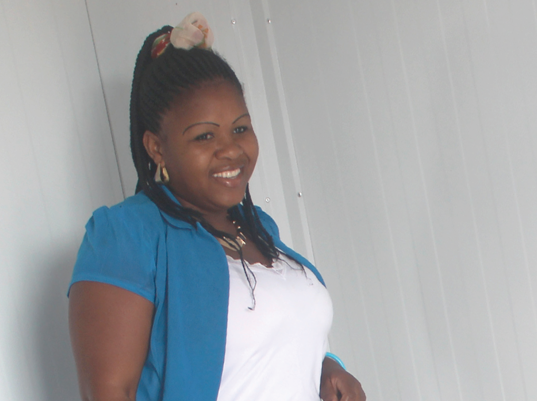 Like others across the country, many of the women in the village were unemployed and depended mostly on their husbands to support their families.
Like others across the country, many of the women in the village were unemployed and depended mostly on their husbands to support their families.
“Things were not easy at home. My husband and I have two daughters who we need to provide for. I was unemployed and had to rely on my husband’s salary. He works at a factory in Germiston,” she explains.
Simango and the other unemployed women from the village met with the Department of Rural Development and Land Reform in 2010 and were taught the basics of starting a business.
After receiving training, the women deco- rated vuvuzelas with beads in time for the 2010 FIFA World Cup. The vuvuzelas were sold for R120 each.
Simango is one of many benefiting from the Comprehensive Rural Development Programme (CRDP) that President Jacob Zuma launched in 2009.
The programme was piloted in Muyexe and soon the department will take it to other rural areas around the country.
Recently, Vuk’uzenzele took a trip to the tiny village to check on the progress of the programme. During the visit, Simango and her colleagues from Muyexe Arts and Craft displayed the bowls and water bottles they decorated with beads.
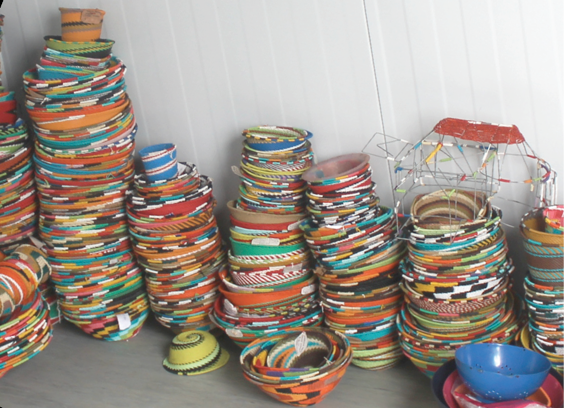 Simango explains that it takes the women one day to decorate a small bowl, which they sell for R36. The large bowl goes for R130 while lamp shades are sold at R300.
Simango explains that it takes the women one day to decorate a small bowl, which they sell for R36. The large bowl goes for R130 while lamp shades are sold at R300.
She says each of the women can earn R1 500 per month, especially when they get invites to big events where they exhibit their products. “The last market we went to was in Irene, outside Pretoria, and it was successful. From 8am to 2pm we made R1 440,” she says.
Though the programme has made a positive impact in the lives of many Muyexe women, Simango says they still face challenges such as accessing the market and material to make their products.
She called on the department to help them with skills to market their products more effectively.
Simango said although she and her colleagues did not make a lot of money, their lives had changed since the start of the project as they are now to able to feed their families
Healing wounds of the past
Healing wounds of the past sadminNation building
The inauguration of the late former President Nelson Mandela, adoption of the Constitution, establishment of the Truth and Reconciliation Commission (TRC) and 2010 FIFA World Cup. These are just some of the events South Africans will never forget.
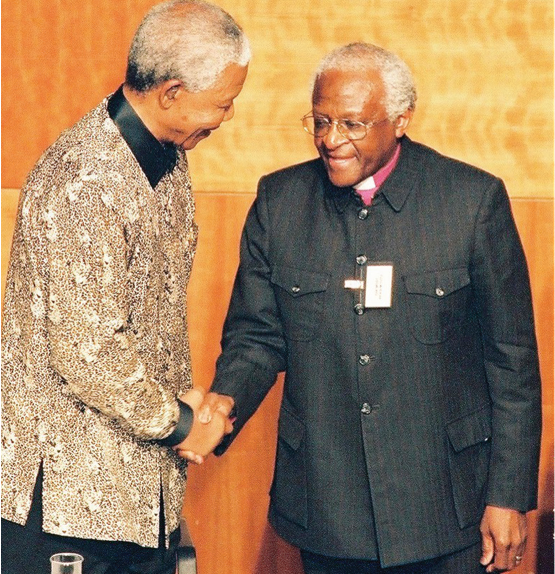 They rank among the defining moments in the country’s democratic history that have contributed to nation building and social cohesion.
They rank among the defining moments in the country’s democratic history that have contributed to nation building and social cohesion.
Nation building and social cohesion is when societies with different origins, histories, cultures, religions and languages come together.
The Constitution was established to remove the divisions of the past and to create a united society. Adopted in 1996, it is the highest law in the land and promotes a non-racial, non- sexiest society and improved quality of life for all South Africans.
The Constitution calls on government to respect, protect, promote and fulfil the rights of every citizen as stated in the Bill of Rights. Equally, all South Africans are also bound by the duties and responsibilities of citizenship. Establishing the Constitution and its commitment to promote human rights was one the greatest achievements ever recorded in the country’s 20 years of democracy.
But despite the establishment of the Constitution, South Africans could not prosper in an environment still rife with anger, intolerance, pain and feelings of worthlessness inflicted during apartheid. As a solution, the Truth and Reconciliation Commission (TRC) was established in 1995.
Chaired by Archbishop Desmond Tutu, the TRC was a court-like body set up by government to help South Africans who were previously victimised. Anybody who felt they had been a victim of violence could approach the TRC to be heard. Through this platform, numerous stories of grief, pain and resentment were shared and bridges of forgiveness and reconciliation built.
The mandate of the commission was to bear witness to and record crimes relating to human rights violations and in some cases grant amnesty to those responsible for these crimes. The TRC also facilitated reparation or compensation to victims and their families.
The commission had three specific tasks: to discover the causes and nature of human rights violations in South Africa between 1960 and 1994; to identify victims with a view to pay reparations; and to allow amnesty to those who fully disclosed their involvement in politically motivated human rights violations. Four resolutions were identified by the TRC, which included a final reparation - a once-off individual grant of R30 000 paid out to victims; medical benefits and other forms of social assistance; community rehabilitation; and the establishment of symbols and monuments. The Department of Justice and Constitutional Development oversaw the implementation of the TRC's recommendations. According to the department, 21 769 citizens were eligible to receive final reparations by the TRC, yet only 16 837 beneficiaries applied for this. Forty-two beneficiaries are still undergoing legal processes to be paid out and 13 outstanding beneficiaries have been declared untraceable. As part of the medical benefits, victims and their families received free health services.
A Missing Persons Task Team was also established by the National Prosecuting Authority (NPA) in 2004, to conduct investigations into cases of people who had disappeared in political circumstances between 1960 and 1994. Victim’s families also received a once-off grant of R17 000 for a reburial or R8 500 for a symbolic burial. To date, 91 remains of missing persons have been exhumed and 67 families have received the exhumed remains.
The department also assists families with, among others, applications for special pensions and once-off reparation grants where applicable, counselling by the Freedom Park Inter-Faith Committee and the Department of Social Development, and applications for South African identity documents for children of victims born outside the Republic of South Africa during the conflict period from 1960 to 1994.
While the Constitution and TRC has had a major role in nation building, the role of sport in uniting the country is equally important.

From 1994, Sport and Recreation South Africa jumped onto the nation-building wagon by constructing 744 sport and recreational facilities across the country. The impact that sport has had on nation building was proven in 1995 when South Africans of all races united in supporting the Springboks who won the 1995 Rugby World Cup.
The Springbok’s biggest supporter was the then President Mandela who walked onto the field wearing the Springbok jersey bearing the number of the Springbok captain Francois Pienaar.
Since then, sport has been used as a tool to unite communities and diverse groups in fair competition and recreational fun. Heightening social cohesion was the 2010 FIFA World Cup, when South Africa welcomed the world as it played host to the first-ever soccer world cup held on African soil.
Government stepped up its social cohesion efforts by hosting the first-ever National Cohesion Summit in 2012 and the National Cohesion Strategy was developed. A nation- wide campaign was launched and government officials interacted with communities to hear the challenges they faced.
Despite the challenges the country faces with regards to social cohesion, one factor has continued to unite the nation over the years – a shared love for former President Mandela.
Over the years South Africans of all walks have come together to celebrate his release from prison, his inauguration as President and his birthdays – setting aside time for community service in his honour.
More recently, former President Mandela united the country and the world as everyone collectively grieved his death. While he may no longer be around, Madiba will always be South Africa’s greatest unifier
